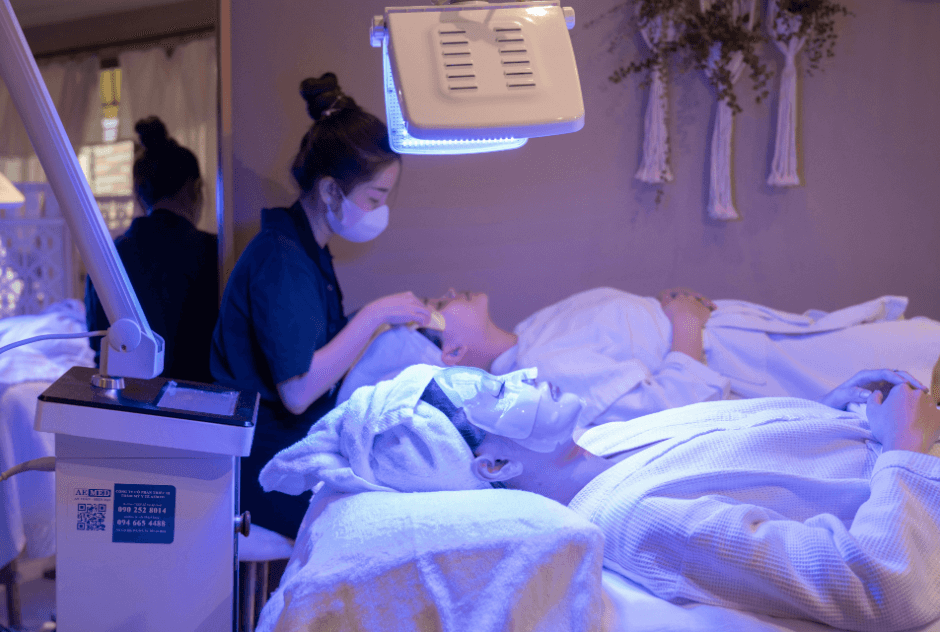
What Does LED Light Therapy Do for Skin Care?
LED light therapy is a non-invasive treatment gaining popularity for its effectiveness in addressing various skin concerns. By utilizing different wavelengths of light, it offers solutions for issues such as acne, aging and inflammation, making it a versatile addition to skincare routines.
This article will assess the role of LED light therapy and the ways in which can benefit your skincare regime.
Addressing Common Skin Issues
Many individuals face skin problems like acne, signs of aging and inflammation, which can affect their confidence and overall skin health. Acne often results from clogged pores and bacteria, leading to breakouts and potential scarring. Aging signs, including fine lines and wrinkles, are natural but can be accelerated by factors like sun exposure and lifestyle choices. Inflammation, caused by stress or environmental pollutants, can result in redness and discomfort. Consulting with skincare professionals, particularly Cherry Creek facial experts, can provide guidance on selecting appropriate treatments and maintaining healthy skin.
Beyond the common concerns, skin sensitivity and reactivity have become increasingly prevalent issues in modern society. Environmental factors such as air pollution, increased screen time and chemical exposure can compromise the skin’s natural barrier function. This disruption can manifest as heightened sensitivity, unexpected allergic reactions, or chronic conditions like rosacea. Understanding these emerging challenges helps in developing comprehensive treatment approaches that not only address visible symptoms but also strengthen the skin’s resilience against external aggressors.
The Role of LED Light Therapy
LED light therapy offers a targeted approach to treating various skin concerns through specific light wavelengths. Blue light is effective in reducing acne by targeting the bacteria responsible for breakouts. Red light therapy promotes collagen production, helping to diminish fine lines and improve skin elasticity. Green light can assist in reducing pigmentation and evening out skin tone. By selecting the appropriate light for your specific needs, you can enhance your skin’s appearance and address multiple concerns simultaneously. For those wondering ‘What does LED light therapy do?’, it essentially uses light energy to penetrate the skin and stimulate cellular processes that rejuvenate and heal.
Recent advancements in LED technology have introduced combination therapies that utilize multiple wavelengths in a single session. This innovative approach allows for simultaneous treatment of various skin concerns, maximizing the efficiency and effectiveness of each session. For example, combining red and blue light can address both aging concerns and acne in the same treatment, while adding near-infrared light can enhance healing and reduce inflammation at a deeper cellular level. This multi-wavelength approach represents a significant evolution in LED light therapy, offering more comprehensive solutions for complex skin issues.
Read also: Discover Harker Herbals at NZ Health Store
Customizing Treatments for Optimal Results
To maximize the benefits of LED light therapy, it’s important to tailor treatments to individual skin types and concerns. Consulting with skincare professionals can provide valuable insights into selecting the right wavelength and treatment frequency. For instance, those with sensitive skin might start with lower-intensity sessions to allow the skin to adapt. Additionally, combining LED therapy with complementary skincare practices, such as using hydration masks or gentle exfoliation, can further enhance results and support overall skin health.
LED light therapy’s adaptability makes it a valuable tool in addressing diverse skincare challenges. By understanding and applying the correct wavelengths, individuals can effectively target issues like acne and aging signs, achieving healthier skin with minimal side effects. This approach, supported by professional guidance, ensures that treatments are both effective and safe for long-term use. For those interested in exploring more about this treatment, LED facials offer a comprehensive solution tailored to various skin needs.
The timing and seasonal considerations of LED light therapy treatments play a crucial role in their effectiveness. During summer months, when sun exposure is higher, treatments might need to be adjusted to accommodate increased skin sensitivity. Winter sessions may benefit from more frequent applications to combat the effects of harsh weather and indoor heating on the skin. Creating a treatment calendar that aligns with significant life events or seasonal changes can help maintain consistent results while adapting to varying skincare needs throughout the year.




